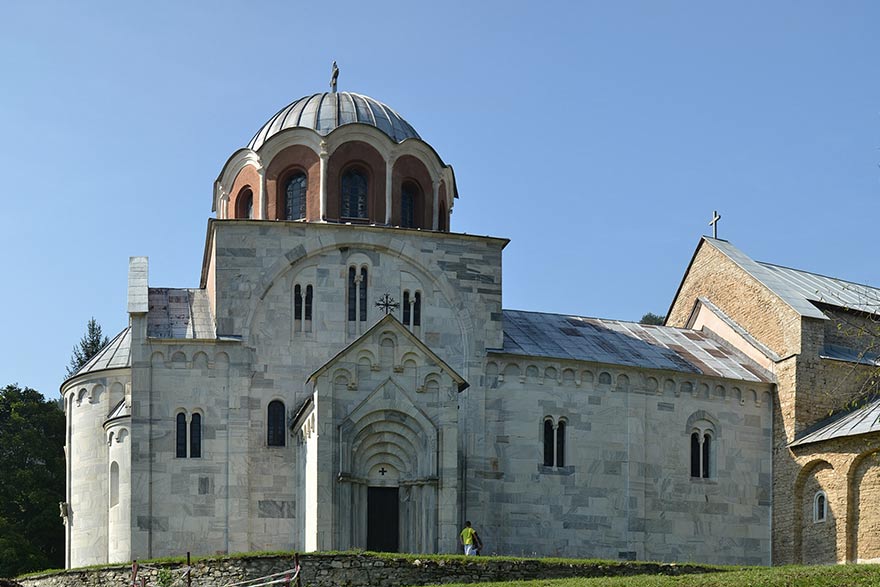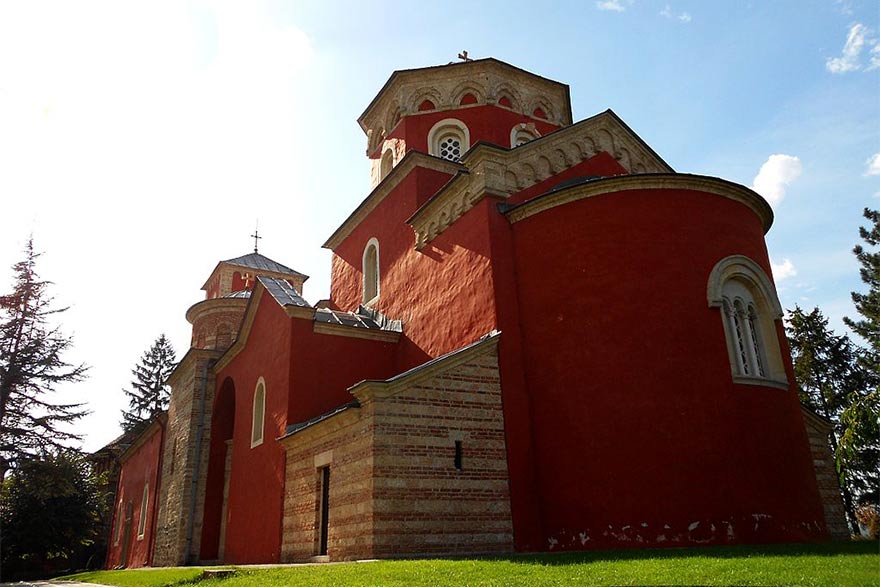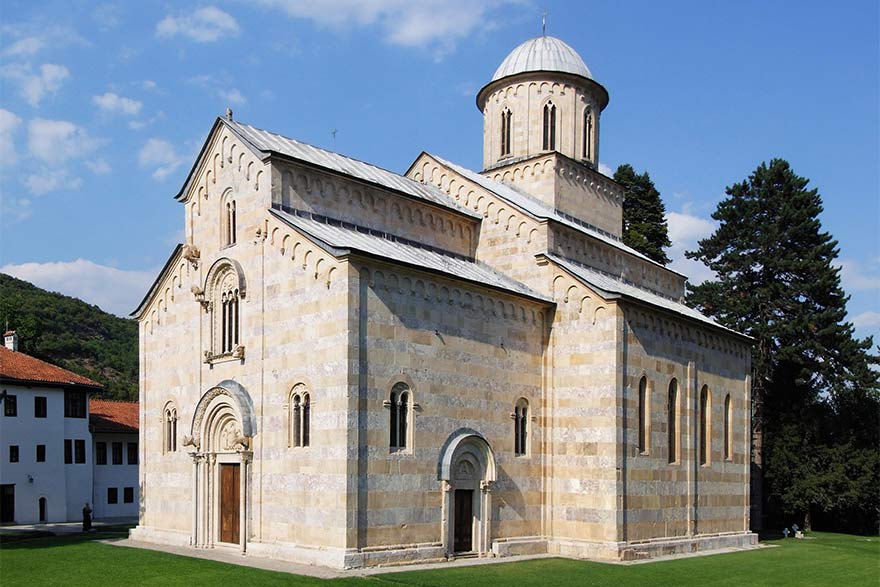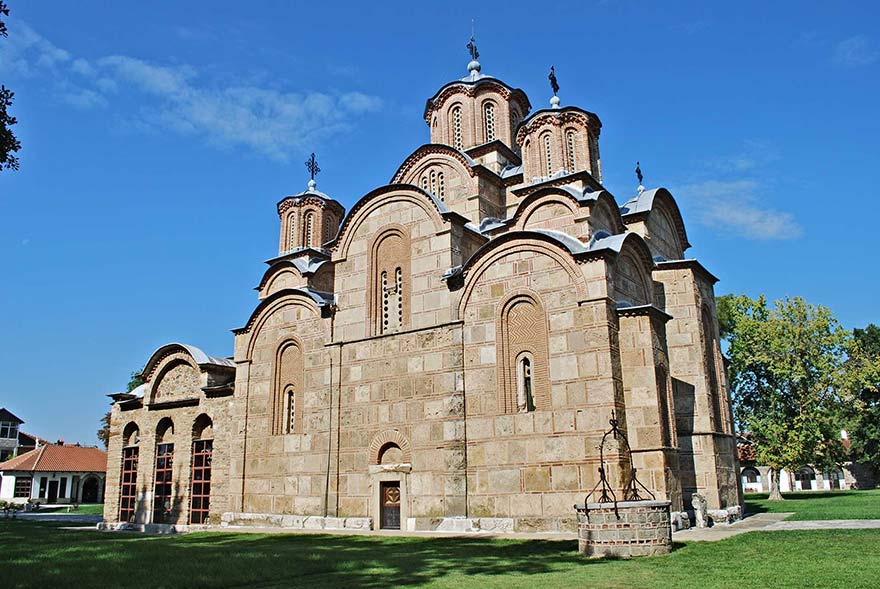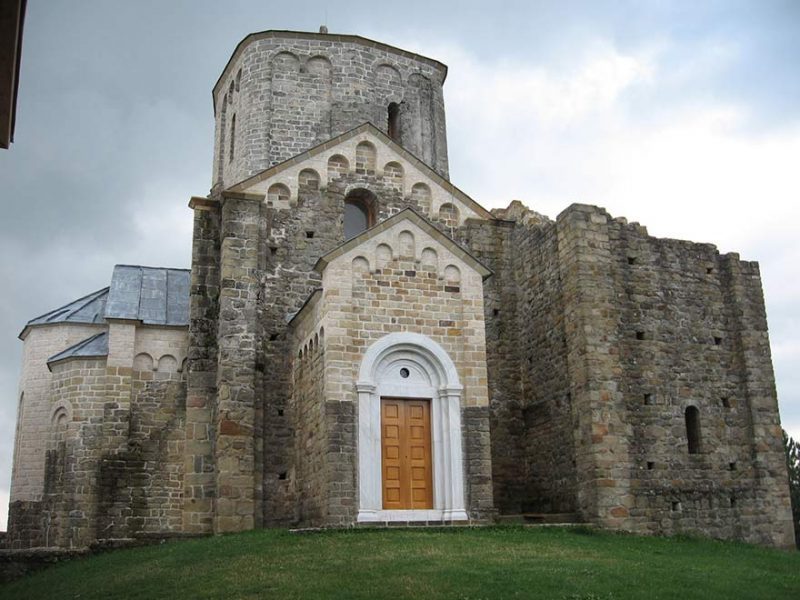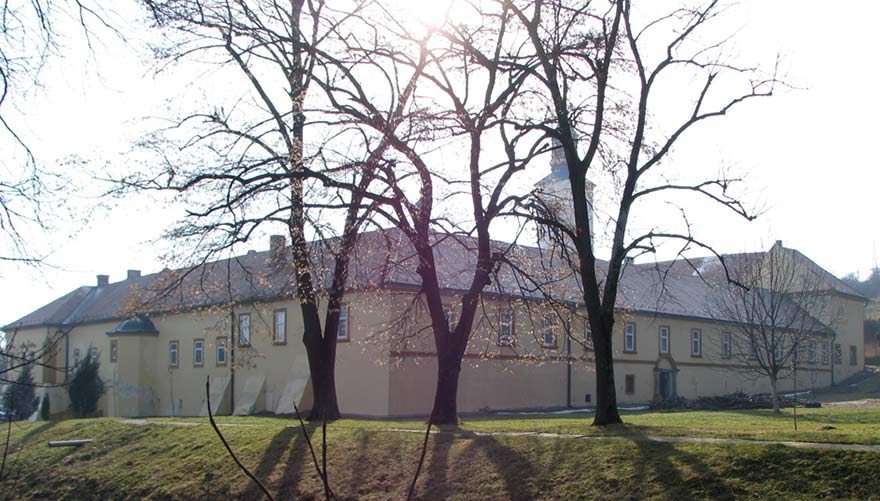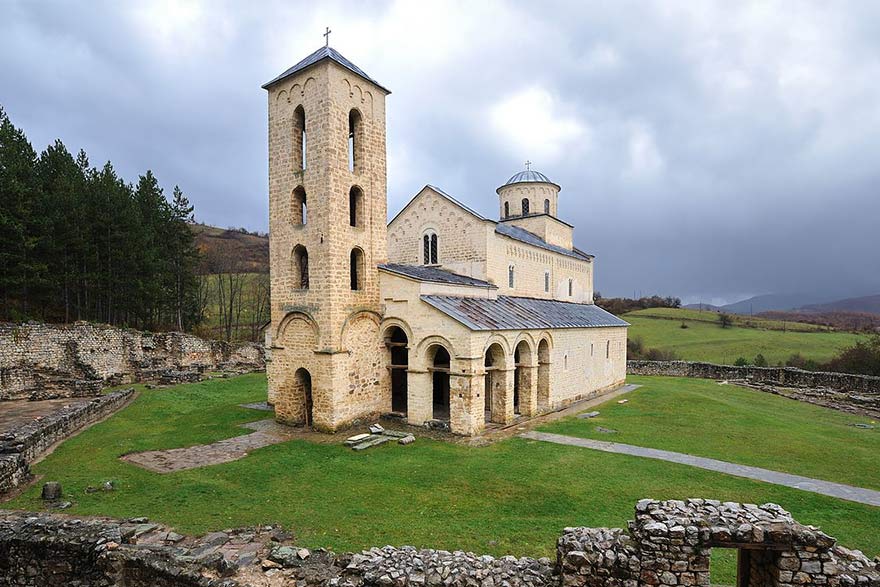Serbia’s history has seen plenty of ups and downs, and the many glorious monasteries of the nation have seen it all. Dotted around the country are these immense complexes that kept the Serbian nation alive during the toughest of times. From Vojvodina all the way down to the disputed territory of Kosovo, these are Serbia’s most beautiful monasteries.
Studenica
Where else to start? Founded in the 12th century, Studenica is arguably the most impressive monastery in the entire nation. Stefan Nemanja, the founder of the medieval Serb state, founded the monastery in 1190. Not too far from the Ibar gorge, the monastery is an incredible example of Serbian medieval architecture, although that is plainly clear to anyone who lays lies on it.
The two white marble churches are the highlight, although art lovers absolutely should nip inside to check out some of Serbia’s finest frescoes. Studenica was declared Monument of Culture of Exceptional Importance in 1979, and it is protected by Republic of Serbia, and in 1986 UNESCO included Studenica monastery on the list of World Heritage Site.
Žiča
If Studenica is the architectural gem of the Serbian monastery roster, Žiča takes home the crown for historical importance. It was built by none other than St. Sava himself, along with the the imaginatively named Stefan the First-Crowned (the first King of Serbia, if you were unaware).
The dramatic red of the monastery sets it apart from the others on the Kings Route. Serbian Kings weren’t considered official until they had been crowned here, and Žiča was also the seat of the Serbian Orthodox Church for the first 34 years of its independence.
Visoki Dečani
Located in Kosovo, the famous Visoki Dečani monastery currently finds itself under 24/7 armed guard. This is the result of years of violence from Albanian extremists, some of which has taken a worryingly fundamentalist turn in recent times.
The monastery has stood since the 14th century and is rightly considered one of the Seven Wonders of Serbian Construction. The largest preserved collection of Serbian medieval art can be found here.
Mileševa
Sticking with the medieval art theme for a moment, the most famous piece of Serbian medieval art can be found at Mileševa monastery, just outside Prijepolje. The White Angel was almost lost in the centuries of Ottoman rule, but the 13th century fresco rose to prominence in the 20th century.
It became the first image sent into space, turning more eyes to Mileševa than ever before. Considering the monastery was completed in 1236, it was a long time coming.
Gračanica
Another Serbian monastery in Kosovo, Gračanica was actually bombed by NATO in 1999. It has since become the centre of the Serbian community in the breakaway region, regaining an importance that it has held since its establishment in 1321.
Gračanica is home to a large community of nuns who have been active here since World War II. The monastery was also made famous in an iconic painting by Serbian artist Nadežda Petrović.
Đurđevi Stupovi
Most of Serbia’s incredible monuments require some searching before they can be discovered. Not so the majestic Đurđevi Stupovi, located a short drive from Novi Pazar.
This 12th century house of tranquility is built in a real position of prominence, on the top of a hill not far from the city. 13th-century king Stefan Dragutin is buried here, in this gorgeous juxtaposition of Byzantine and Roman building styles.
Krušedol
Located in the lush greenery of Fruška Gora, Krušedol wasn’t established until the 16th century but this doesn’t make it any less impressive or historically important.
When the Ottomans first began their incursions into the lands of Southern Serbia it was to Vojvodina that the people fled, setting up an entirely new roster of monasteries in the process. Krušedol may well be the most impressive building located in the magnificent national park.
Sopoćani
The medieval Serbian state was centred around a hilltop fortress called Ras, and Sopoćani monastery’s proximity to that iconic site has guaranteed its importance since being established in the 13th century. King Uroš I Nemanjić initially ordered it built to provide him with a worthy burial ground, but the complex grew and grew over subsequent generations.
This was one of the famous monasteries that the Ottomans laid waste to, destroying it in 1689 and leaving it abandoned for centuries. Sopoćani gained a new lease of life in the 20th century however, and it has been dragged from its slumber by some of the most dedicated monks in the region.
Source: theculturetrip.com
